ENGR 338 2021 Spring
Lab 5: The Inverter
Taylor Nakai
tsnakai@fortlewis.edu
Introduction:
In
this lab, we used ElectriVLSI to create the schematic and layout of an
20/10 and 100/50 inverter. With the inverters we were able to perform
simulations using LTSpice, ALS, and IRSIM. The lab tasks required us to
create a schematic of the inverter, create a layout of the inverter,
use the multiplier function to build a larger inverter, run simulations
to verify the capabilities of the two inverters created, and use ALS
and IRSIM to perform simulations.
Task 1:
In
task 1, we were given the task to create a schematic of the 20/10
inverter. To begin we needed to use vdd symbol, gnd symbol, ports, a
PMOS transistor, and a NMOS transistor to be able to create the
schematic shown in Figure 1. To check if the implementation of the
inverter was done correctly a simulation was conducted to determine if
the input is inverted, as shown in Figure 2. After the inverter was
checked, we wrote the spice for a transient simulation using the
PULSE() input, which the code is shown in Figure 3 and the result is
shown in Figure 4.
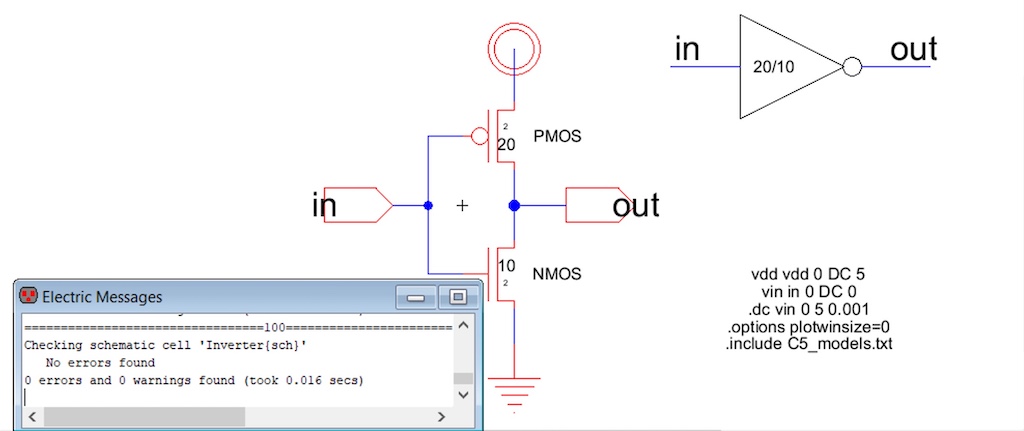
Figure 1. Schematic and Icon of 20/10 inverter with DRC check showing no errors.

Figure 2. Simulation of 20/10 inverter showing that it inverts the input.
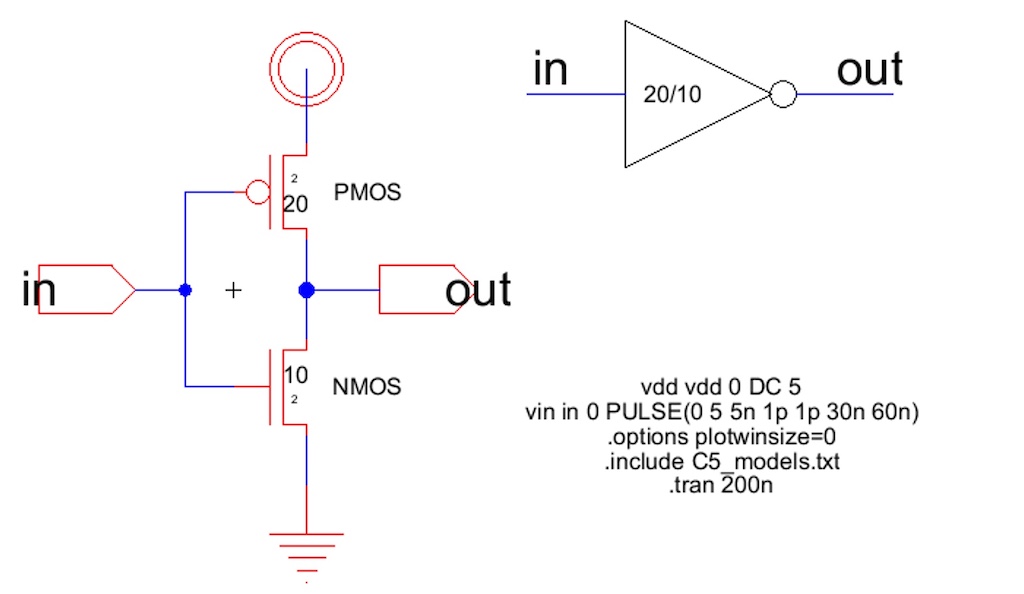
Figure 3. Schematic of 20/10 inverter showing the spice code for a PULSE() input.
 Figure 4. Simulation of 20/10 inverter with PULSE() input.
Figure 4. Simulation of 20/10 inverter with PULSE() input.
Task 2:
In
task 2, we were given the task of creating the layout of the inverter.
To create the layout of the inverter, we had to use a nWell, 2 pAct, a
pMos, 2 nAct, a nMos, and a pWell. After making all the correct
connections and exporting in, out, gnd, and vdd, we ran a DRC and NCC
check to ensure everthing was done correctly. The result of the layout
of the inverter is shown in Figure 5.
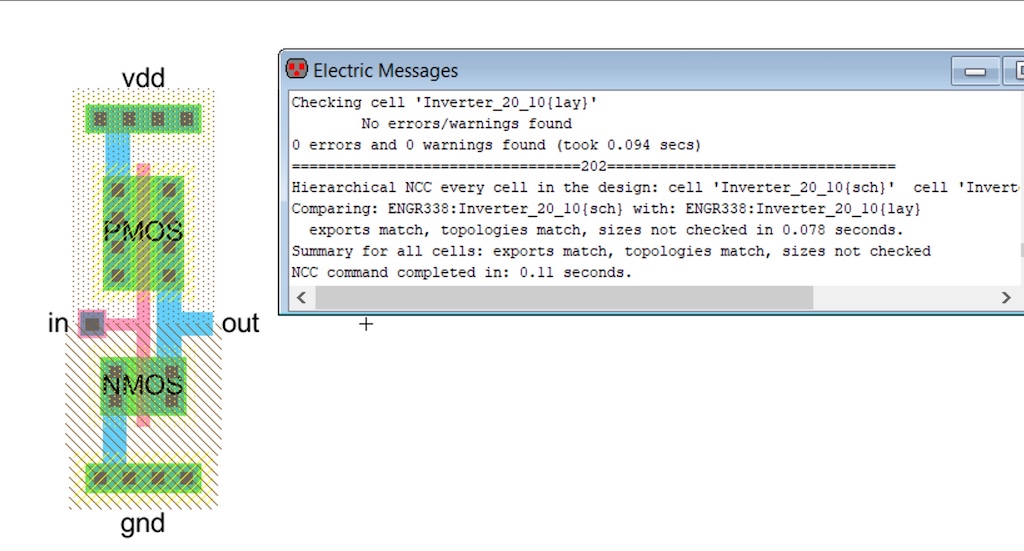
Figure 5. Layout of the 20/10 inverter with DRC and NCC checks to showing no errors.
Task 3:
In
task 3, we were given the task of using the multiplier function to
build a larger inverter (100/50). Using a duplicate of the 20/10
inverter built in task 1, we used the multiplier function to add 5
parallel PMOS and NMOS transistors, as shown in Figure 6. After the
schematic was completed for the 100/50 inverter, we needed to duplicate
and modify the layout created in task 2. We had to add 5 PMOS, 5 NMOS,
and modify the dimensions of the nWell and pWell of the layout, which
the result is shown in Figure 7. A DRC and NCC check was ran to ensure
that everything was done correctly, which can also be shown in Figure 7.
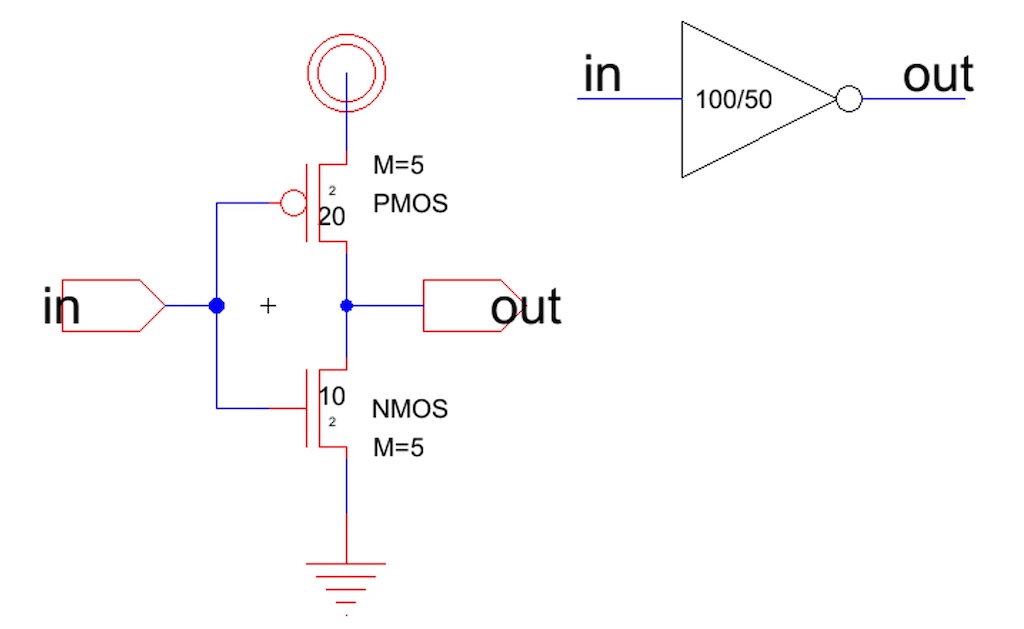
Figure 6. Schematic of 100/50 inverter using multiplier function.
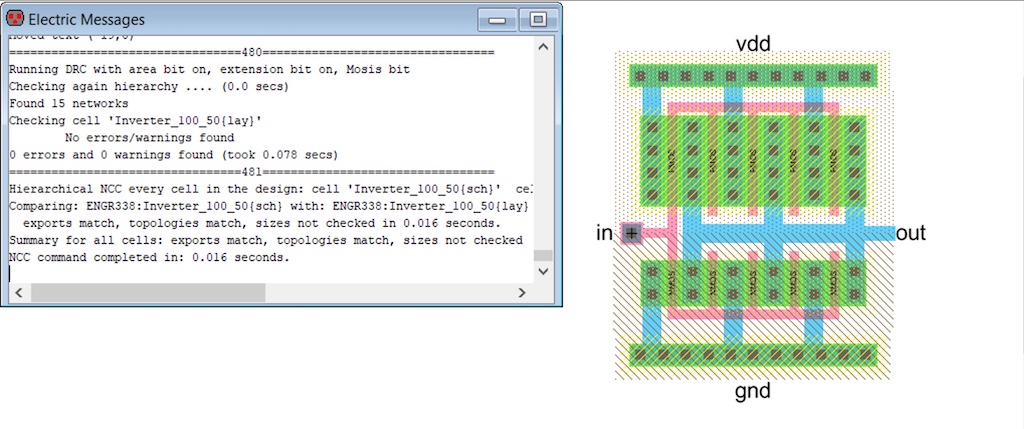
Figure 7. Layout of 100/50 inverter with DRC and NCC checks showing no erros.
Task 4:
In
task 4, we were given the task to verify the driving capabilites of the
20/10 and 100/50 inverters by running 3 different simulations to drive
a 100fF, 1pF, and 10pF capacitor. For the 3 simulations using the 20/10
inverter, the schematics were created then the simulation was completed
using LTSpice, the results of the 20/10 simulations can be seen in
Figures 8-10. For the 3 simulations using
the 100/50 inverter, the schematics were created then the simulation was
completed using LTSpice, the results of the 100/50 simulations can be
seen in Figures 11-13.

Figure 8. Schematic of 20/10 inverter using a capacitor (100f) as the load and simulation ran in LTSpice.

Figure 9. Schematic of 20/10 inverter using a capacitor (1p) as the load and simulation ran in LTSpice.

Figure 10. Schematic of 20/10 inverter using a capacitor (10p) as the load and simulation ran in LTSpice.

Figure 11. Schematic of 100/50 inverter using a capacitor (100f) as the load and simulation ran in LTSpice.

Figure 12. Schematic of 100/50 inverter using a capacitor (1p) as the load and simulation ran in LTSpice.

Figure 13. Schematic of 100/50 inverter using a capacitor (10p) as the load and simulation ran in LTSpice.
Task 5:
In
task 5, we were given the task of using different simulation tools like
ALS and IRSIM. To begin we needed a schematic to conduct the
simulations with so we build a schematic using both inverters as shown
in Figure 14. Using ALS, we ran a simulation and set the input signal
and got immediate results of the 2 out signals, as shown in Figure 15.
Using IRSIM, we ran a simular simulation to the ALS simulation but
noticed that in IRSIM there was a noticable delay, as shown in Figure
16.
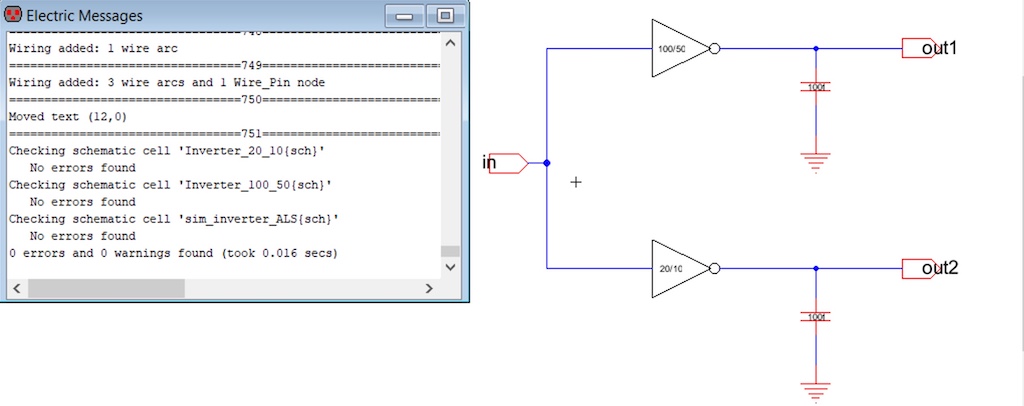
Figure 14. Schematic using a 100/50 inverter and 20/10 inverter with a clean DRC.
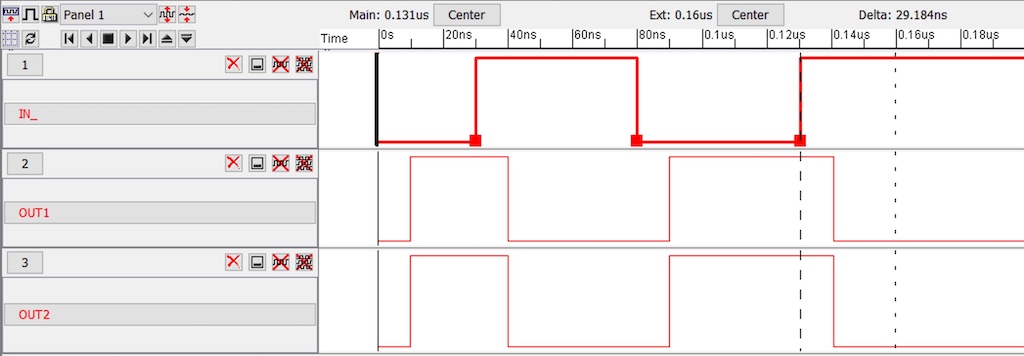
Figure 15. Results from ALS simulation using IN to toggle the signal.
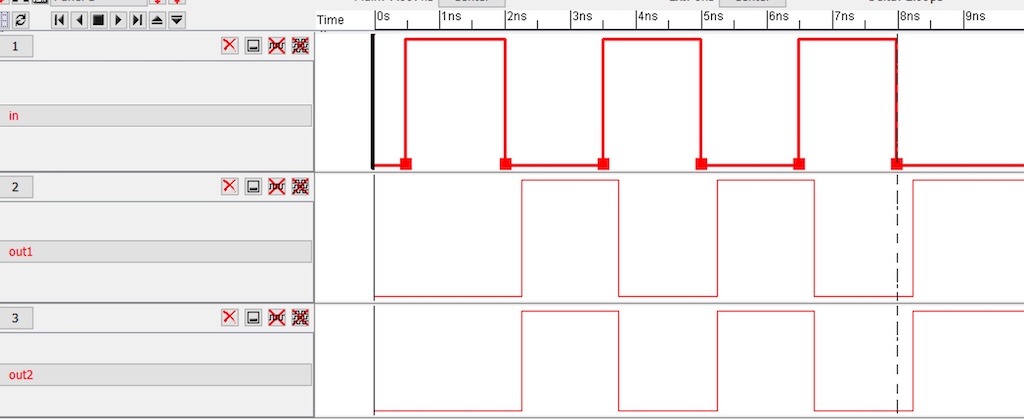
Figure 16. Results from IRSIM simulation showing the different delay times.
Discussion:
By
completing this lab, we were able to gain more experience with
ElectriVLSI, create a schematic and layout for an inverter, and perform
simulations using LTSpice, ALS, and IRSIM. I was successfully
able to complete all the task required using ElectriVLSI and LTSpice.
This was an interesting lab and I felt that this lab was useful with
learning how to create an inverter using the NMOS and PMOS transistors
that we have been working with in previous labs.



 Figure 4. Simulation of 20/10 inverter with PULSE() input.
Figure 4. Simulation of 20/10 inverter with PULSE() input.










